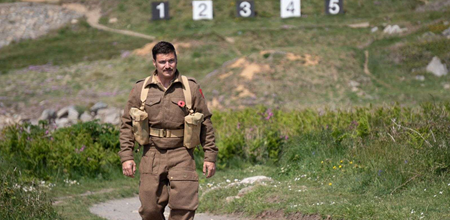From muscle power to megawatts, read our feature in the February/March issue of Aurigny's Envoyage magazine below. We dive into the past 125 years of Guernsey Electricity and how Guernsey's energy landscape has changed and continues to evolve.
In 1937, a Francis Barritt Hills made a significant quote that has filtered through the generations.
“… there is hardly one outstanding invention of the pasty fifty years that does not employ the medium of electricity in one form or another.”
Eighty-eight years later, and we can all agree on one thing – electricity makes almost everything we do possible.
And this year, we’re celebrating 125 years of bringing power to Guernsey, giving us the chance to turn down the notifications on modern life and take a step back to see how far we’ve come.
GUERNSEY’S BIG BANG
Scrolling back to 1900, Guernsey’s very first electricity company was formed after a Mr F.E. Gripper received a concession to build and operate an “electricity generating and distribution system” in 1898 on behalf of Edmundsons Electricity Corporate of London.
The Yacht Hotel – better known today as Boots the chemist – was the first building to be wired. However, the people of Guernsey had to wait until February 1900 for the first units of power to be generated and ‘distributed’ to customers from Les Amballes power station in St Peter Port.
Officially opened on 26th July 1900, Les Amballes was soon followed by another power station at Northside, the Vale. At a time when only coal was used to generate electricity, thankfully the island’s ‘maximum demand’ was just 150 kilowatts.
For some context, today 150 kilowatts could power the heating and ventilation system in a medium sized office.

Photo: Les Amballes Power Station (1900)
STATE OWNED
After a long public debate, the States of Guernsey took ownership of the ‘Guernsey Electric Light & Power Company’, creatively re-naming our utility as the ‘States Electricity Board’ on 1 July 1933.
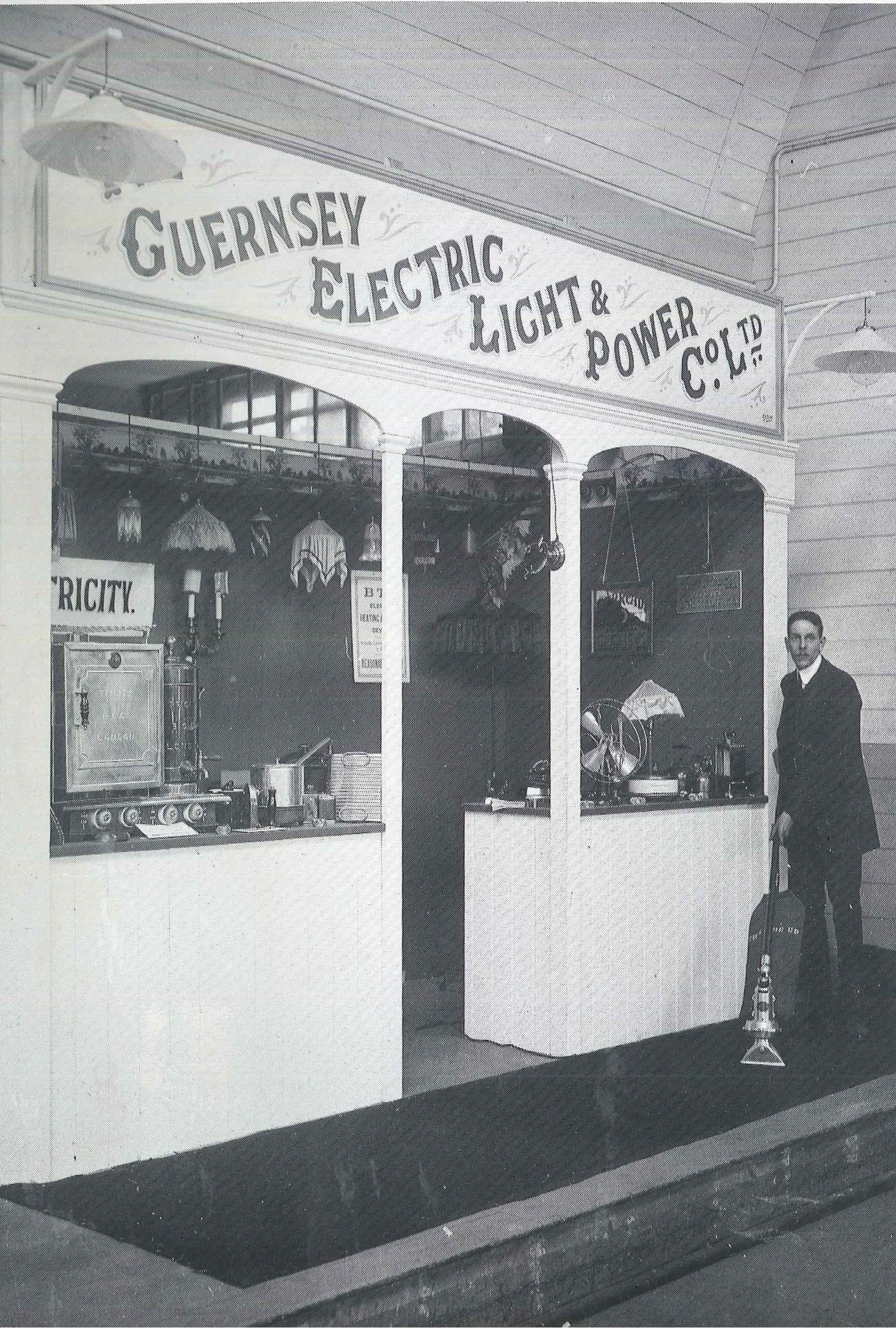
Photo: Shows the Guernsey Electric Light & Power Co Ltd (1933)
THE OCCUPATION
At a time when blackout rehearsals were normal, the maximum demand during the winter of 1936/37 rose to nearly 3 megawatts serving a customer group of over 5,000. With the prospect of war growing, the time came for the States Electricity Board to reinforce our power station.
During the German Occupation, electricity was severely restricted as emergency stock of coal and oil needed to be gathered. By the end of March 1945, electricity became severely limited. Even the hospital only had power for four hours a day. To islander’s relief, electricity rationing came to a welcome end on 24th May 1945.
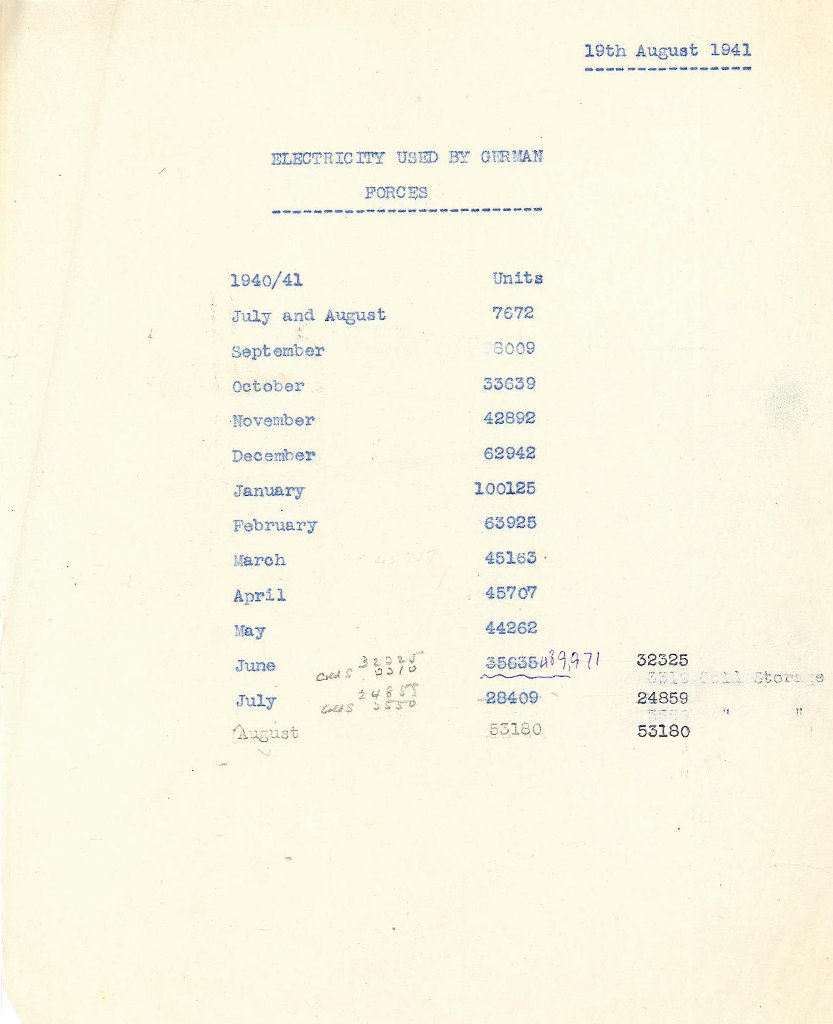
Photo: Shows electricity used by German Forces (1940-41)
STORMS OF CHANGE
You may have noticed that unlike most parts of the world, we have no overhead power line cables in Guernsey.
The storms of early 1985 brought down several overhead power line cables, causing some of the frequent power cuts people may remember. These storms were eye-openers that sped up the decision to relocate any overhead lines below ground to be safe from Guernsey’s cruel high winds.
Any doubts over the wisdom of this decision were blown away on the night of the 15th/16th October 1987 when hurricane forces of the ‘Great Storm of 1987’ hit Guernsey. As it took around 5-weeks to repair the damage, all remaining overhead lines were replaced with underground cables over the following 15 years.
PRIVATE BUSINESS
In 1993, a name you’re maybe more familiar with became official when ‘Guernsey Electricity’ was adopted as the trading name. In 1998, the ‘Channel Islands Electricity Grid’ was also established to operate subsea cables supplying electricity from Europe to provide a secure, reliable and affordable electricity source.
In 2001, GE became ‘GEL’ as Guernsey Electricity became a Limited Company following commercialisation with the ‘States of Guernsey’ as the sole shareholder.
CONNECTION TO THE WORLD
While celebrating GEL’s 100th anniversary, the year 2000 spelled great – positive - change for the island as the subsea cable ‘Guernsey-Jersey 1’ (GJ1) was installed.
In fact, it was this event that had the biggest reduction to the island’s carbon emissions on 1990’s levels as a huge amount of demand was removed from our fossil-fuel power station. Our subsea cable (GJ1) can import 60 megawatts (MW) of low carbon electricity from the European grid (via Jersey) to our homes and workplaces. When our power demand exceeds 60MW, we make up the difference by 'topping up' our electricity supply using the Vale power station.
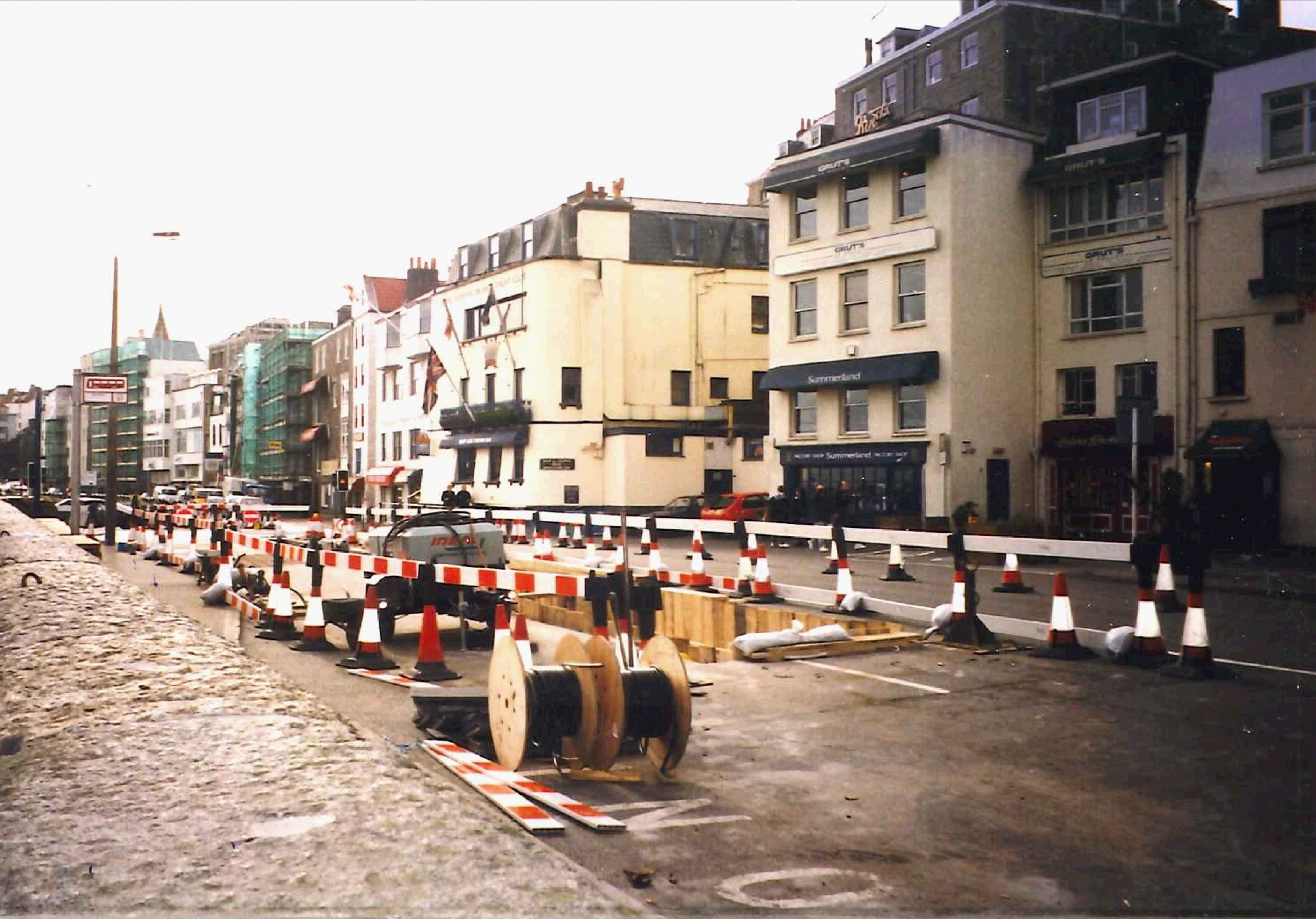
Photo: Cable laying in St Peter Port (1999)
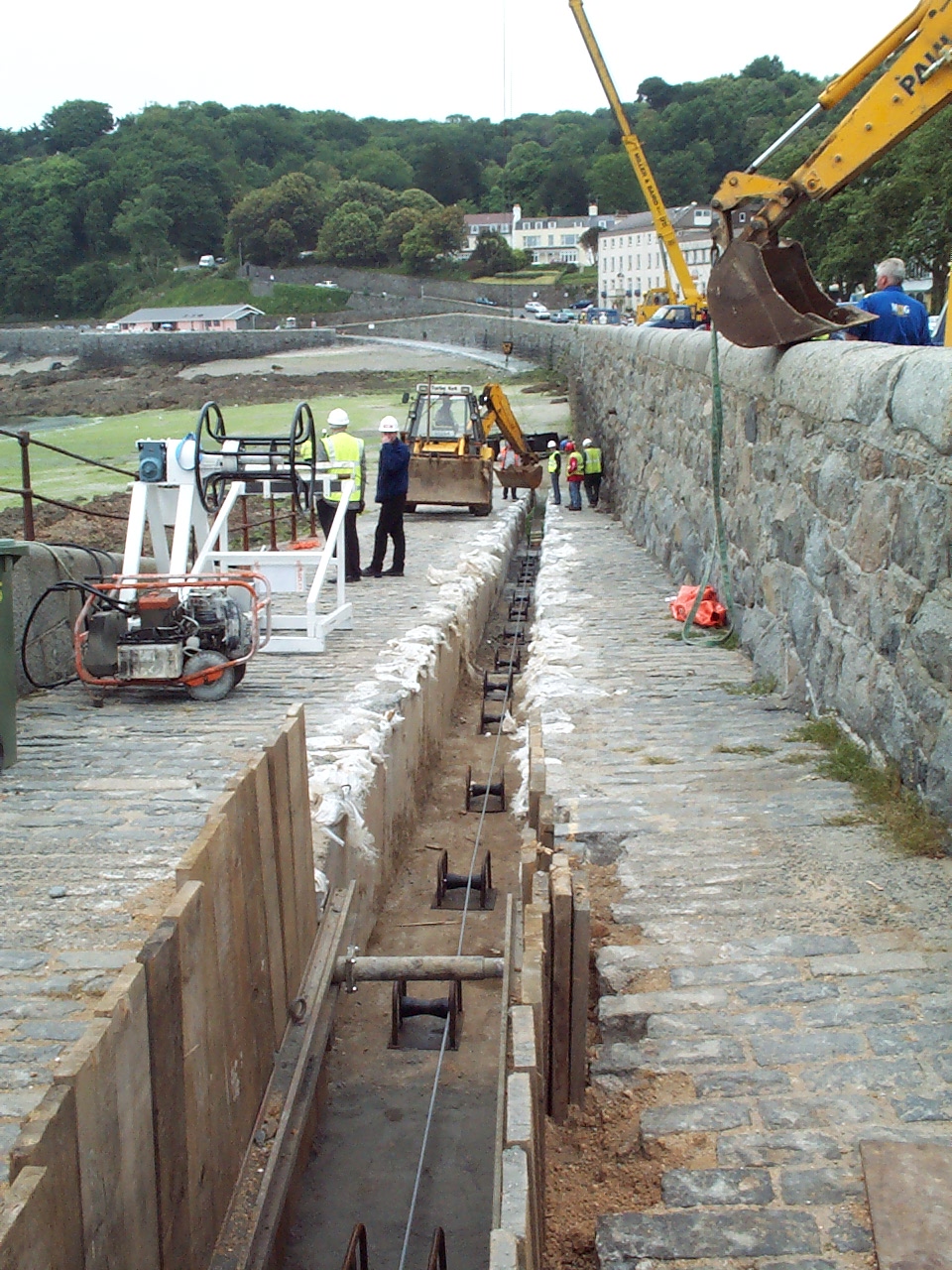
Photo: Cable link from France via Jersey being installed (2000)
POWERING CHANGE TODAY
The only constant has been change over the last 125 years, and today you’ll see or hear about us developing the network every single day. With conversations around on- island renewables, new technology and decarbonisation always strong talking points, we’re working hard upgrading our network to decarbonise the island.
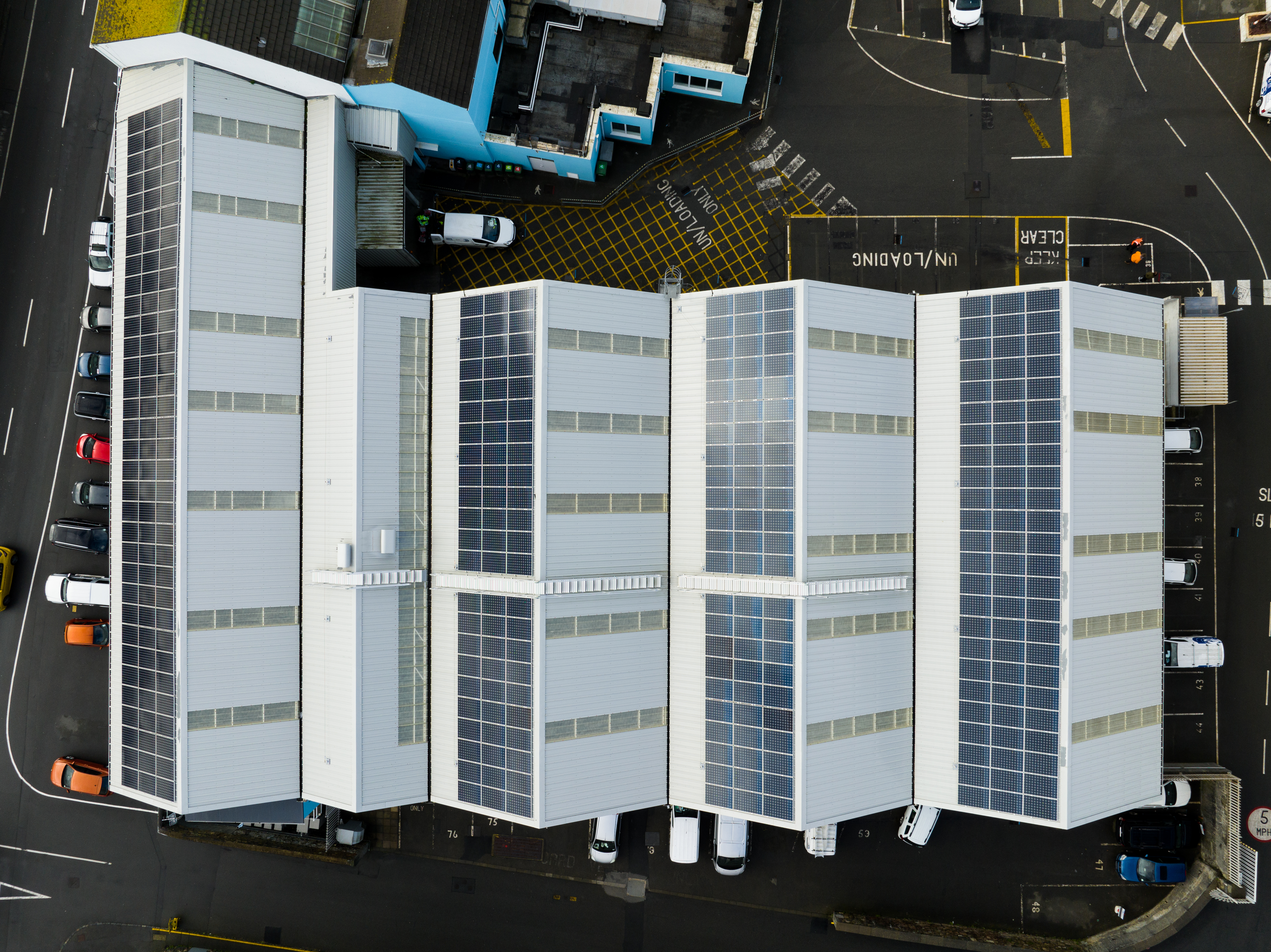
Photo: Solar panels installed on the roof of the power station
If you’d like to stay in the know with what’s happening today, why not sign up for our e-newsletter here.









